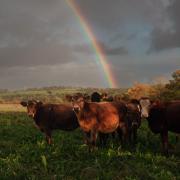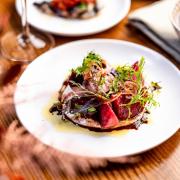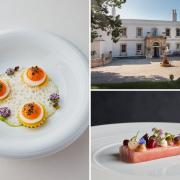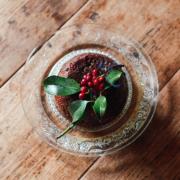Our columnists wonder whether the little-known British oddity Devon white ale is due for a comeback
In an age when novelty is king and so many breweries are producing takes on spicy Belgian saison or tart German Berliner Weisse there is an historic British oddity that is surely ripe for a comeback: Devon white ale.
The history of Devon white ale, like the beer itself, is somewhat opaque. When people don’t know the origins of something they tend to make up post-rationalising stories and so white ale is sometimes said to have been invented by a German regimental surgeon ‘centuries ago’, presumably because of a vague resemblance to certain hazy, pale German wheat beers.
What we can say for certain, thanks to newspaper records and the thorough work of local historian and author David Swift, co-author of the recently published Devon Pubs, is that white ale was widely known and popular in Devon in the 19th century. It was most often connected with Dodbrooke, Kingsbridge and the South Hams in general, but also with Plymouth where, David Swift says, almost fifty pubs brewed it during the Victorian era.
If you had a mug of white ale brought to you while working in the fields, or ordered one in a Plymouth pub, what would you have received? We are lucky that in this case, unlike with many other historic beers, tasting notes survive.
One 1917 article entitled ‘Queer Tipples’, for example, says: “It looks like milky water, and tastes like a slightly bitter solution of brewer’s yeast.”
A composite picture emerges of a beer that was somewhere between 2% and 4% ABV, cloudy, and rather chewy.
The greatest mystery of white ale, and perhaps the largest part of its allure, was the use of a mysterious substance called ‘ripening’ or ‘grout’ in its fermentation.
Ripening makers guarded the secret jealously but it is now widely accepted that this batter-like goop was a mixture of yeast, numerous accidental bacteria and other bugs, flour, salt, sugar and eggs – yes, eggs! White ale was generally drunk very fresh, even while it was still fermenting, because unsurprisingly it went bad very quickly.
David Swift has argued that white ale began to die out partly because the health risks of ripening were exposed by a local historian and doctor with the unlikely name of Paul Q Karkeek in 1877. Certainly by the turn of the 20th century it had already become semi-legendary. When James John (J.J.) Mitchell of Plymouth died in 1930 his obituary described him as ‘the last brewer of the famous white ale in South Devon’, having produced his final batch in around 1905.
Oddly, white ale had a brief revival in 1931, apparently featuring in exclusive parties in Mayfair, London, on the back of a previous craze for green beer (lager dyed green). Who brewed this version, or whether it contained gut-churning ripening remains unknown.
A 21st century brewer tackling Devon white ale might be excused the omission of eggs, but a pale, cloudy, slightly sour beer without too much alcohol sounds super hip to us.



























